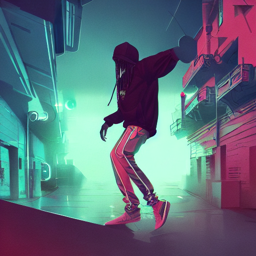Hip-hop is a cultural movement that originated in the South Bronx, New York City, in the 1970s. It consists of four elements: MCing (rapping), DJing, breaking (dancing), and graffiti writing. Hip-hop has evolved over the years and has become a global phenomenon, influencing various aspects of popular culture, including music, fashion, and art.
One of the earliest pioneers of hip-hop was DJ Kool Herc, who created the first hip-hop party in 1973. He used two turntables to extend the breaks of funk and soul records, which allowed him to create a continuous flow of music. This technique, known as “cutting,” became an essential element of hip-hop DJing.
In the 1980s, hip hop became more mainstream and began branching into different subgenres, such as gangsta rap and new school hip hop. Gangsta rap, originating on the West Coast, was characterized by lyrics glorifying violence and drug use. New school hip hop, on the other hand, was more experimental and focused on creativity and innovation.
In the 1990s, hip-hop experienced another evolution with the emergence of alternative hip-hop and the commercial success of artists such as Tupac Shakur and Notorious B.I.G. Alternative hip-hop, which blended elements of jazz, funk, and rock with traditional hip-hop, became popular among a more diverse audience.
Hip hop has continued to evolve and diversify in the 21st century, with the emergence of subgenres such as trap, mumble rap, and cloud rap. Trap, which originated in the South, is characterized by its use of electronic beats and lyrics that often focus on drug dealing and street life.
Mumble rap, which emerged in the mid-2010s, is characterized by its use of distorted and slurred vocals and lyrics that often lack substance. Cloud rap, which also appeared in the mid-2010s, is characterized by its use of ethereal beats and introspective lyrics.
Hip-hop has also significantly impacted popular culture and influenced various aspects of fashion, art, and language. It has helped to create a unique style of dress, with baggy jeans, baseball caps, and sneakers becoming popular staples of hip-hop fashion.
Hip-hop has also inspired various forms of visual art, including graffiti and graphic design. Hip-hop has contributed to the development of a unique slang and vocabulary that has been adopted by people all over the world.
Despite its widespread popularity, hip-hop has not been without controversy. Some critics argue that specific subgenres, such as gangsta rap, promote negative stereotypes and glorify violence and drug use. There have also been numerous violence and controversy within the hip-hop community, including the high-profile deaths of Tupac Shakur and Notorious B.I.G. in the 1990s.
In conclusion, hip-hop is a cultural movement that has evolved and diversified over the years, influencing various aspects of popular culture, including music, fashion, and art.
While it has faced controversy, it has also significantly impacted society and helped create a unique identity and culture. It is difficult to predict where hip-hop will go, but it will continue to evolve and shape popular culture for years to come.
New artists will likely continue to emerge and bring fresh perspectives and styles to the genre. Technology will also probably play a role in shaping the future of hip-hop, with advances in music production and distribution continuing to change how music is created and consumed.
It is also possible that hip-hop will continue to diversify and incorporate elements from other genres, as it has done in the past. Ultimately, the future of hip-hop will be shaped by the creativity and innovation of the artists who contribute to it.



Can I simply just say what a comfort to discover an individual who genuinely knows what they are discussing on the internet. You definitely realize how to bring an issue to light and make it important. More people should look at this and understand this side of the story. I was surprised that youre not more popular since you surely possess the gift.